Bitcoin and blockchain: the crypto revolution is unstoppable, but where is it headed?
Bitcoin is breaking records again, and other digital currencies are skyrocketing. Even large corporations are entering. Cryptocurrencies are back. What are the developments in this overheated sector and what other promises does the technology behind it make?
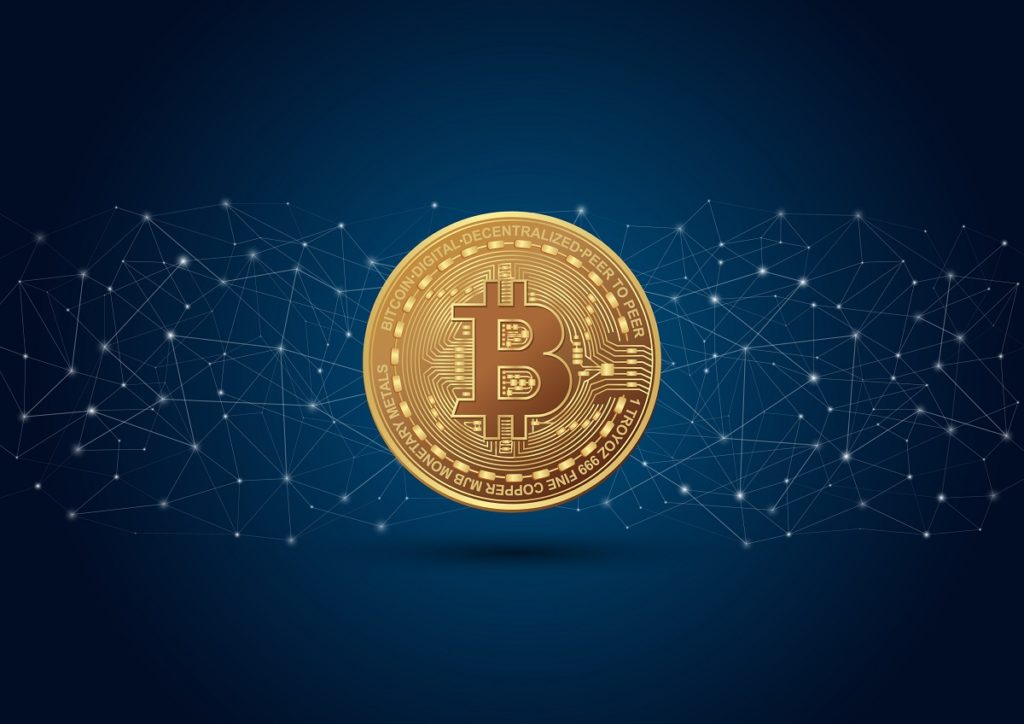
Just when you think it’s over, it starts again. After the crash of 2018, the crypto market rebounded. Bitcoin surpassed its previous record price and other cryptocurrencies followed suit. All kinds of parties are entering, and there are new applications. It’s more than a bubble: cryptocurrencies may be overvalued, but the technology behind it, the blockchain, is here to stay.
Experts who delve into it are quick to agree. Blockchain is a revolutionary technology, a new way to arrange things with each other. For companies, but certainly also for society. We have become used to the bank managing our money, the tax authorities arranging allowances and the land registry keeping track of whose house belongs to whom. If a party fails to comply with an agreement, a judge will ultimately decide on the matter.
“These institutions have quite a lot of power,” says Peter Slagter, host of the BNR Cryptocast and co-founder of knowledge platform LekkerCryptisch. Although it is known how opaque and even unreliable institutions can be. And how much social damage they cause.
The bank blocking an account because it does not agree with a business model, the tax authorities discriminating and reclaiming large amounts of money from families, a counterparty not paying as agreed resulting in a threat of bankruptcy. With blockchains this can all be a thing of the past.
A shared ledger
Not a handful of central parties manage the registers with balances and property rights but decentralized (and transparent) networks in which everyone can participate. Data is not held at one central point, but at many points; it is transparent to everyone; and no one can make changes unilaterally.
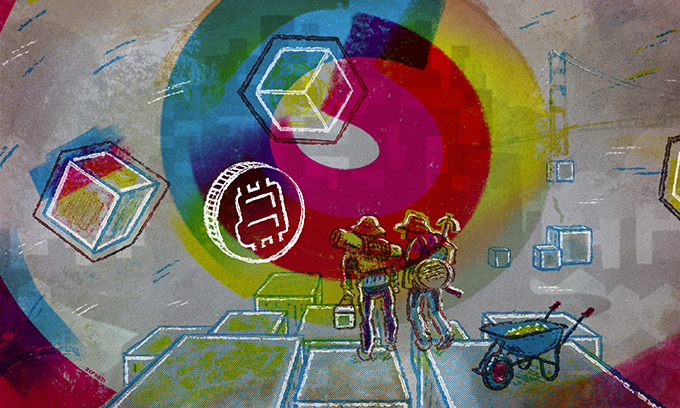
Block by block of information is cryptographically strung together (hence the name, blockchain) to form a shared ledger. Not by important men, but by computer power.
No more handshake or scribble on a piece of paper. Also, you no longer have to hope that someone else will keep his/her promises. These are recorded in computer code and executed as soon as intended. Immediately after a transfer, for example, or when a service has been delivered. Forget cloudy decision-making, from now on everything is clear.
Digital gold rush
That’s the theory. How are blockchains developing, what do we notice? At first glance, it appears to be characterized by major price fluctuations and enormous eagerness and recklessness. Digital gold fever is alive and well.
Many (especially young) people are getting involved, usually without knowing exactly what they are getting involved in but armed with hope. Crypto is the future, you want to be part of it. An investment can halve in a day, or worse, but can also become worth ten times as much.
‘It’s great that you can try a lot of things out’
Professor of Private Law Eric Tjong Tjin Tai
The growth continues. The total market value is over two trillion euros now, and there are already ten thousand cryptocurrencies. A selection: Dogecoin, Penguin Finance, Skycoin, MoonBoobs, and Magic Internet Money. Are these projects going to change everything? Small chance. They are mainly profiting from the hype.
Applications, actual results, demand for a product? Often it is not there yet. There is a slick website and sometimes a prototype or basic product. Then the ball can start rolling. If enough people get on board, the price will rise, leading to even more people entering. “People like to gamble,” says full professor of Private Law Eric Tjong Tjin Tai. “But don’t think there’s anything behind it. There are a lot of scams.”
Experiment
It’s all part of the game. Innovations are often accompanied by a boom. It was the same with the rise of the internet, which changed society to its very core. “I’m critical of the hype and crazy things,” says Tjong Tjin Tai, “but it’s great that you can try out many things, that way there’s a greater chance of something positive coming out of it.” This is also how endowed professor of Financial Market Infrastructures Ron Berndsen sees it: “It’s one big experiment.”
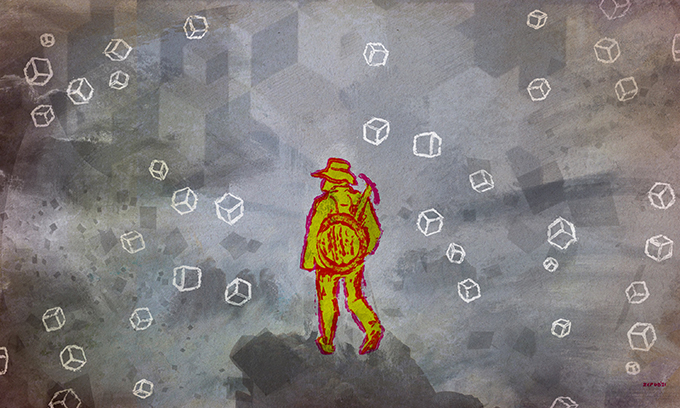
And it’s not all nonsense. There are developers with serious intentions and interesting things happening. It’s just hard to pinpoint winners yet. What seems nonsensical could be a discovery. What is praised today may turn out to be a whim tomorrow. Yet there is already something to be said about it. Two cryptocurrencies stand head and shoulders above the rest: Bitcoin and Ethereum.
A government that does crazy things
It all started with an idea, in 2008. An electronic money system between people, with no bank or government involved. Bitcoin, the first successful crypto currency, still serves that purpose today. It’s expensive to send, though there are solutions for that, but in some countries it’s a godsend. “It’s faster than the mail,” says Tjong Tjin Tai. And it allows you to get around payment restrictions.
Berndsen also points to hyperinflation. Where a government currency plummets, Bitcoin can be a safe haven. “It may even increase in value. But in the Netherlands or the EU, we don’t have to deal with that.” Here, things are well regulated, is the idea.
‘Bitcoin is a neutral money system’
Crypto expert Peter Slagter
So, in the Netherlands, for example, there is no added value in putting the land registry on a blockchain, says Tjong Tjin Tai, who conducted research on the subject for the Ministry of Justice and Security’s Scientific Research and Documentation Centre.
“People who think blockchains would be great for the land registry often assume that a government is doing crazy things. Then I can imagine the benefit.” But is an untrustworthy government going to abide by agreements on houses made on a blockchain? “There’s a kind of naivety to it, the link to human reality is missing.”
Network effects
Naivety or not, it is undeniable that Bitcoin has been rising in value for over a decade. Why is that? Slagter thinks network effects play a big role. “Suppose you’re the only one with a car. You can travel distances faster; that has value. But if everyone has a car, your car will be worth more too. Then there is a reason to build infrastructure. Roads, petrol stations, and parking places.”
Bitcoin also has network effects: usage is increasing and there are stock exchanges, platforms, and payment terminals. But is the crypto currency, which is now worth more than fifty thousand, expensive or cheap? Slagter: “Who knows? The price is the sum of all the reasons why someone does something with Bitcoin.” Saving, speculating, investing, paying with it, using it as collateral. It’s all possible “on a neutral money system.”
Berndsen puts the exchange rate fluctuations in a broader context. “Interest rates are incredibly low, we’ve had a major financial crisis, a health crisis to top it up, everyone is looking for returns.” A lot of money has gone into houses, stocks, and also crypto.
Bitcoin is digital gold
What is growing strongly is the idea that the largest crypto currency is primarily an investment. Bitcoin? That’s digital gold. For the professors, this view meets with resistance. “You’re not going to consider Pokemon cards as paper gold, are you? While it can be a good investment,” says Tjong Tjin Tai. “Gold has intrinsic value, is the thought. Bitcoin doesn’t. It’s kind of collecting digital stamps.”
Ron Berndsen is also skeptical. “Bitcoin only has value because others attribute it to it, that’s a weak basis. With gold, you have something concrete behind it. Something that is purely digital and has no other purpose is very artificial in my opinion. Why would you want to pay a lot of money for that?”
Berndsen, who worked at De Nederlandsche Bank for years as head of the Market Infrastructure Policy department, does see that an infrastructure has been created and that large companies are entering. “That has created more credit.”
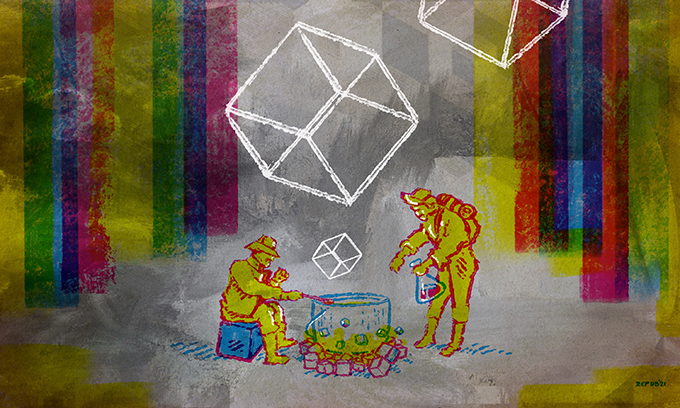
And Bitcoin isn’t the only thing for which you can ask questions about value. For example, what about currency notes? “It has a pretty picture on it and a watermark, but it doesn’t mean anything by itself. The trust in it is the most important thing. If there appears to be trust in Bitcoin, it could hold up.”
“Gold has been known to be scarce for thousands of years, that’s where the value comes from, not the application,” says Peter Slagter, also author of the book Ons geld is stuk: En waarom Bitcoin de oplossing is (Our Money Is Broken: And Why Bitcoin Is the Solution), which was just published. “It has to be mined and is growing by a few percent a year.”
Bitcoin is even scarcer, according to the crypto expert, with up to twenty-one million coins, it’s easy to divide, can be moved quickly, and it’s easy to prove it’s real. “Bitcoin is scarce and wipes out the disadvantages of gold,” he said. The digital currency is also a good fit for a world that is digitalizing at an increasing rate.
Serious players
Confidence in crypto is on the rise, even among large companies. The American tech company MicroStrategy has about five billion dollars’ worth of Bitcoin on its balance sheet, Tesla follows with a modest one and a half billion, American PayPal users can keep cryptos in their accounts, the major bank J.P. Morgan, after a fierce anti-crypto course, comes up with its own currency, and there is even a country, El Salvador, that has recognized Bitcoin as legal tender.
Slagter sees that the tide is starting to turn: “In the beginning, Bitcoin was mainly seen as something for criminals, it would never amount to anything, then it became crazy internet money, a bubble, and now you see that there are serious players who see something in it.”
On Ethereum it happens
The undisputed number two of the market is Ethereum, which has continued where Bitcoin began since 2015. Ethereum is home to smart contracts, which can be programmed on. All kinds of agreements and (business) processes can be recorded on it. This is where opportunities arise.
Companies can “mutually accept that the blockchain represents reality,” says Tjong Tjin Tai, even if they do not quite trust each other. After all, no one can mess with the data unilaterally. “For international trade, where you’re far apart and have little in the way of law enforcement, this works well.”
Companies and firms like Microsoft, IBM, and Ernst & Young are looking into how to use Ethereum. It promises an efficiency boost. For example, fewer lawyers and accountants are needed to check the books and contracts. That control is built into blockchains, Berndsen says. “It has great advantages compared to the whole paperwork we put on each other. Blockchains are the infrastructure of the future.”
‘In the business world you want to know who you’re dealing with’
Professor of Financial Market Infrastructures Ron Berndsen
Although Berndsen does make a distinction between the technology, the blockchain, and the cryptocurrencies that are often linked to it. Ethereum is a public, anonymous network with its own crypto currency, the value of which fluctuates considerably. Berndsen is more interested in closed blockchains, where speculation does not play a role and only certain parties have access. “In the business world you want to know who you’re dealing with. Whether your suppliers and creditors are good for their money.”
Ultimately, blockchains have broader uses. Medical data, personal data – it could be managed by citizens themselves. So that a healthcare provider only has access to medical data for as long as you are being treated, or a company can only view personal data temporarily.
And the possibilities stretch far beyond that. But what is happening now? What are the first applications of blockchains, and what are they showing? Although all kinds of competitors are emerging, it is clear that Ethereum has the biggest network effects after Bitcoin. That is where the innovations are taking place. We highlight two: decentralized finance and non-fungible tokens.
Manage your own money
“What Bitcoin does with money, Ethereum is trying to do with other financial products. Mortgages, insurance, everything you know, they’re trying to organize based on contracts and program code,” Slagter says. And they’re already doing a pretty good job. Trading, borrowing, and lending without the intervention of a third party? It is the most normal thing in the (crypto) world, and it has a name: decentralized finance (DeFi).
What’s special about DeFi? You don’t need to open a bank account, don’t even need to identify yourself, you can get started almost immediately. Ethereum runs smart contract protocols like Uniswap and Aave. You can buy new cryptocurrencies there before the big boys have snatched everything up and get a higher interest rate than in your bank account. It offers opportunity, and freedom.
Millions for profile pictures
A little more puzzling is the following. What do financial services company Visa and rapper Snoop Dogg have in common? They bought at least one CryptoPunk, a unique character from a collection of 10,000. In 2017, enthusiasts could pluck them from the Ethereum network for free; four years later, tons are being paid for them, rising to 12 million for CryptoPunk 7523, an alien with a face mask. “For profile pictures.” Slagter laughs, still find it a bit unreal.

CryptoPunks are one of the most successful non-fungible tokens (NFTs). They are non-fungible, not replaceable, but unique like every Rembrandt painting. There is only one The Night Watch and there is only one CryptoPunk 7523.
The image itself can be stored by anyone, just as anyone can take a picture of a painting. But the ownership, that lies somewhere else, in this case on the blockchain.
“What are we actually trading?” wonders Ron Berndsen. “Rights to an image, but what do you have?” Eric Tjong Tjin Tai: “It’s created scarcity, which is not to say it’s nonsense. It has value because people accept it.”
The scope of NFTs is broader. Music, copyright, and photos can also change hands with it, Slagter says. It is mainly about power, which will fall more to consumers and artists instead of auction houses and platforms like YouTube, who would otherwise claim a (large) share of the cake. DJ JustinBlau, for example, already sold original music directly to fans.
Digital keys and other barriers
Blockchains can remove many barriers, but also raise them. It is still quite complicated (and expensive) to trade directly on the Ethereum network. It is also not without risks. If you lose your digital key, you can no longer access your coins. And smart contracts are not watertight. Sometimes developers have more options than expected, or there is a vulnerability. This year, hackers already got away with hundreds of millions.
In fact, says Tjong Tjin Tai, smart contracts are very complicated candy machines. Sometimes they get stuck, and the candy doesn’t come out, but now there’s no one to help. That can lead to crazy situations. What if the land register is on the blockchain, and someone has lost their digital key? “Then you have a house, and you can’t transfer it anymore. That’s undesirable, to say the least.”
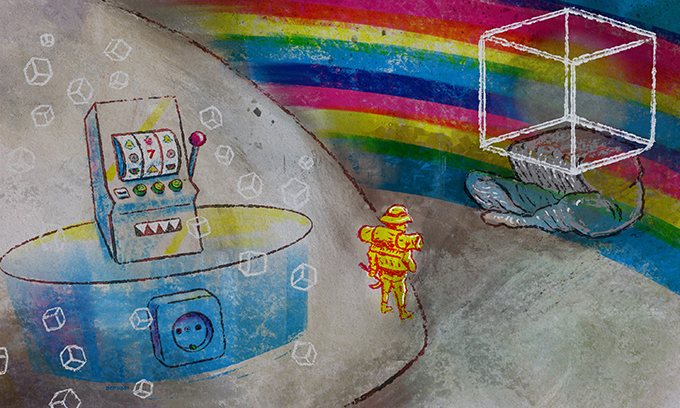
It surprises the legal professor that people put enormous amounts of money into it. “In IT, it has been said for decades: there is no such thing as error-free software. Why should smart contracts be any different?” Compensation if things go wrong? Just see if you can find the person responsible. “Blockchains are cheaper, but you get less. You’re more limited in your options.”
Energy consumption is also a thing. Ethereum is moving to a different model, but Bitcoin requires a large number of computers (or rather video cards) to solve complicated calculations, to keep the blockchain running. That takes quite a few watts. “Consuming energy for a completely pointless purpose, that’s madness,” says Tjong Tjin Tai.
But is it really that pointless? Slagter wonders. Actually, he thinks, that’s what the discussion should be about. What is Bitcoin and what does it add? “Technological innovations go hand in hand with an increase in energy consumption,” he says. For example, we have also made the transition from videotapes to streaming and from horse and cart to the car. “As a society, we then say: it’s okay that we use more energy because we solve things with it.”
The search for meaningful applications
The technology is revolutionary, the first applications are running, but the market has yet to shift from craziness to reality. When will blockchains be everywhere? “If you see how fast the internet is going, I don’t think it will be another ten years,” says Tjong Tjin Tai. Although he follows developments critically, he sees the potential of “new forms of collaboration. Without knowing each other, but with certain guarantees.”
Blockchains are not going away anymore. Is everyone going to stock up on cryptocurrencies, will Bitcoin ever be worth a million, is this the end of government money? How big the move will be remains to be seen. “We need to link blockchain to real problems,” Tjong Tjin Tai believes. “The search for meaningful applications continues unabated,” says Berndsen. Slagter is optimistic: “Probably we have only seen the beginning.”






